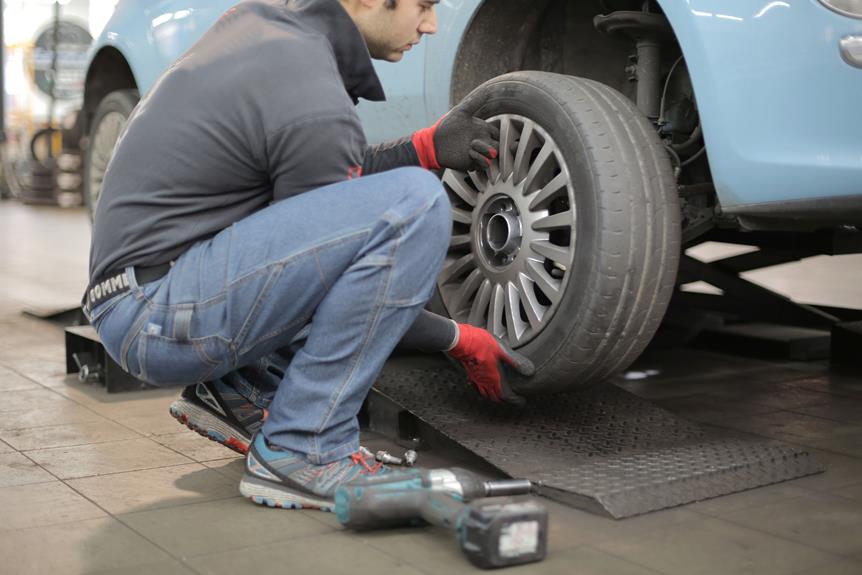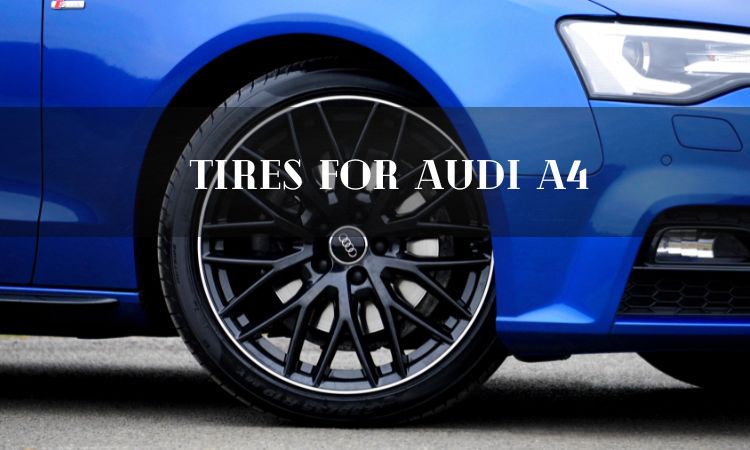Commercial Tire Maintenance: Dos and Don'ts
In the fast-paced world of commercial vehicle operations, tire maintenance is a crucial aspect that cannot be overlooked. Like the gears of a well-oiled machine, tires play a vital role in ensuring smooth and efficient transportation.
This article delves into the dos and don'ts of commercial tire maintenance, providing technical insights, detailed instructions, and informative tips to keep your tires in optimal condition. Whether you are a fleet manager or a driver, this guide will empower you to make informed decisions and maximize the longevity and performance of your commercial tires.
Key Takeaways
- Regular tire inspections are essential for optimal performance and safety on the road.
- Proper tire inflation is crucial for performance, fuel efficiency, and tire longevity.
- Underinflated tires can decrease fuel efficiency, reduce traction, and increase the risk of accidents and blowouts.
- Overinflated tires can lead to blowouts, reduced traction, and irregular wear patterns.
The Importance of Regular Tire Inspections
Regularly inspecting tires is crucial for ensuring optimal performance and safety on the road. The importance of regular maintenance cannot be overstated, as it directly impacts the lifespan and functionality of tires. By conducting regular tire inspections, drivers can identify potential issues early on, allowing for timely repairs or replacements, thus avoiding more significant problems down the line.
One of the key benefits of tire inspections is the increased safety they provide. Tires that are properly maintained and in good condition offer better traction, reducing the risk of accidents caused by skidding or hydroplaning. Additionally, regular inspections can identify any signs of tire wear, such as tread depth or uneven wear patterns, which can indicate alignment or suspension issues. Addressing these problems promptly can prevent potential blowouts or tire failures, which can be extremely dangerous, especially at high speeds or in adverse weather conditions.
Furthermore, regular tire inspections contribute to improved fuel efficiency. Underinflated tires can increase rolling resistance, resulting in decreased fuel economy. By ensuring that tires are properly inflated, drivers can optimize their vehicle's performance and save money on fuel expenses.
Proper Tire Inflation: Finding the Right Pressure
Proper tire inflation is crucial for maintaining optimal performance and safety on the road. Finding the right pressure involves considering various factors such as the vehicle's weight, tire size, and manufacturer recommendations.
Failure to maintain the optimal pressure can result in reduced tire longevity, increased risk of underinflation-related issues, and potential tire damage caused by overinflation.
Optimal Pressure for Longevity
Achieving maximum tire longevity can be accomplished by finding and maintaining the ideal pressure level for your commercial vehicle's tires. Maintaining the optimal pressure for fuel efficiency not only saves money but also extends the life of your tires.
Underinflated tires can lead to increased rolling resistance, resulting in decreased fuel efficiency and premature wear. Overinflated tires, on the other hand, can cause uneven tread wear and reduce traction, compromising the safety of your vehicle.
Additionally, the impact of tire tread depth on longevity should not be overlooked. Bald tires have a reduced ability to grip the road, especially in wet or snowy conditions, increasing the risk of accidents.
Regularly checking and maintaining proper tire pressure, as well as monitoring tread depth, are essential for maximizing tire longevity and ensuring the safety and efficiency of your commercial vehicle.
Underinflation Risks and Consequences
One potential consequence of underinflation is a 15% decrease in fuel efficiency, leading to increased operating costs for commercial vehicles. Underinflated tires create additional rolling resistance, which requires more energy and fuel to overcome. This not only results in higher fuel consumption but also increases wear and tear on the tires.
The risks and consequences of underinflation include:
- Reduced traction: Underinflated tires have less contact with the road, leading to decreased traction and compromised handling. This can increase the risk of accidents, especially in wet or slippery conditions.
- Increased tire wear: Underinflated tires wear unevenly, with the edges experiencing more wear than the center. This reduces the tire's lifespan and necessitates more frequent replacements, adding to the overall cost.
- Heat buildup: Underinflation causes tires to flex more, generating excessive heat. This heat buildup can lead to tire blowouts, potentially causing accidents and endangering lives.
- Decreased stability: Underinflated tires affect the stability and control of a commercial vehicle, making it more difficult to maneuver and potentially increasing the risk of rollovers.
To mitigate these risks and avoid the consequences of underinflation, regular tire pressure monitoring and maintenance should be prioritized.
Overinflation and Tire Damage
Excessive tire pressure can lead to overinflation and cause significant damage to the tires, compromising their performance and safety. Overinflated tires are at a higher risk of experiencing blowouts, reduced traction, and irregular wear patterns. To prevent tire damage from overinflation, it is crucial to regularly check and maintain the recommended tire pressure levels.
Below is a table summarizing the risks of overinflation and tips to prevent tire damage:
| Overinflation Risks | Preventing Tire Damage |
|---|---|
| Increased risk of blowouts | Regularly check tire pressure |
| Reduced traction and stability | Follow the manufacturer's recommended pressure levels |
| Uneven and rapid tire wear patterns | Use a reliable tire pressure gauge |
| Decreased fuel efficiency | Adjust tire pressure when necessary |
| Impaired braking performance | Avoid overinflating tires for a firmer ride |
How to Choose the Right Tire for Your Commercial Vehicle
Choosing the right tire for your commercial vehicle is crucial for ensuring optimal performance and safety. When selecting a tire, it is important to consider the appropriate tire size that matches your vehicle's specifications and load capacity requirements.
Additionally, load capacity factors such as the weight of the cargo and the frequency of use should be taken into account to ensure the tire can handle the demands of your commercial operations.
Tire Size Considerations
A thorough evaluation of the load-carrying capacity and road clearance is essential when assessing the suitability of tire sizes for commercial vehicles. The right tire size ensures optimal performance, safety, and efficiency. Here are four key considerations when selecting tire sizes for commercial vehicles:
- Load-carrying capacity: Commercial vehicles often carry heavy loads, so it is crucial to choose tires that can handle the weight without compromising safety or performance. The load index and ply rating should be carefully evaluated to ensure the tires can support the anticipated load.
- Road clearance: Commercial vehicles may encounter various road conditions, including uneven surfaces and obstacles. Adequate road clearance is necessary to avoid potential damage to the tires or the vehicle's undercarriage. The tire size should allow sufficient ground clearance to navigate such obstacles safely.
- Stability and handling: The tire size directly affects the vehicle's stability and handling. Optimal tire size ensures proper traction, cornering, and stopping capabilities, enhancing overall safety and control.
- Fuel efficiency: The tire size can impact fuel efficiency by affecting rolling resistance. Choosing tires with the right size and tread pattern can help optimize fuel consumption, reducing operating costs and environmental impact.
Load Capacity Factors
Assessing load capacity factors and considering the anticipated weight is crucial when determining the most suitable tire for a commercial vehicle. Load capacity management plays a pivotal role in ensuring safe and efficient operation of these vehicles. One important aspect of load capacity management is understanding the tire load rating, which indicates the maximum weight a tire can safely carry at a specified inflation pressure.
To illustrate the significance of load capacity factors, consider the following table:
| Tire Load Rating | Maximum Load Capacity (lbs) |
|---|---|
| Load Range E | 3,640 |
| Load Range F | 4,080 |
| Load Range G | 4,540 |
Dos and Don'ts of Tire Rotation and Balancing
Properly adhering to the recommended intervals for tire rotation and balancing can significantly enhance the lifespan and performance of your commercial vehicle's tires.
Here are four key points to consider when it comes to tire rotation benefits and tire balancing techniques:
- Tire Rotation Benefits:
- Even Wear: Regularly rotating your commercial vehicle's tires promotes even wear across all four tires. This helps to extend their lifespan and maximize their performance.
- Improved Traction: Uneven tire wear can lead to reduced traction, especially in wet or slippery conditions. By rotating your tires, you ensure that each tire maintains consistent tread depth, resulting in better grip on the road.
- Enhanced Fuel Efficiency: Unevenly worn tires can increase rolling resistance, which negatively affects fuel efficiency. By rotating your tires, you can maintain optimal tread depth and improve fuel economy.
- Balanced Handling: Unevenly worn tires can cause your commercial vehicle to handle unevenly, leading to a less stable and comfortable ride. Regular tire rotation helps maintain balanced handling and ensures a smoother driving experience.
- Tire Balancing Techniques:
- Dynamic Balancing: This technique involves using a balancing machine to identify any imbalances in the tire and wheel assembly. Weights are then added to counterbalance these imbalances, resulting in a smoother ride and reduced vibrations.
- Static Balancing: Static balancing involves placing the tire and wheel assembly on a balancing machine and adding weights to eliminate any imbalances. This technique is commonly used for larger commercial vehicle tires.
- Road Force Balancing: Road force balancing simulates real-world driving conditions by applying pressure to the tire. This technique helps identify any variations in tire stiffness and corrects imbalances accordingly.
- Precision Balancing: Precision balancing uses advanced technology to achieve optimal balance by considering both radial and lateral forces on the tire. This technique ensures a smooth and vibration-free ride.
The Role of Proper Wheel Alignment in Tire Maintenance
Maintaining proper wheel alignment is essential for ensuring optimal tire performance, as it allows for even tire wear and enhances vehicle handling. When the wheels are properly aligned, the tires are able to maintain consistent contact with the road surface, resulting in better traction and improved fuel efficiency. Additionally, proper alignment benefits the suspension system by reducing stress on components such as the shocks and struts.
To ensure the longevity and performance of your tires, it is important to follow some alignment maintenance tips. Regularly inspect your tires for signs of uneven wear, such as feathering or excessive wear on one side. If you notice any of these signs, it is advisable to have your alignment checked by a professional technician.
Another tip for maintaining proper alignment is to avoid hitting curbs or potholes as much as possible. These incidents can throw off the alignment of your wheels and cause uneven tire wear.
In conclusion, proper wheel alignment is crucial for optimal tire performance and vehicle handling. By following alignment maintenance tips and addressing any alignment issues promptly, you can ensure that your tires last longer and provide a smooth and safe driving experience.
Now, let's move on to the next section, where we will discuss some essential tips for tire storage and handling.
Tips for Tire Storage and Handling
When storing and handling tires, it is essential to regularly inspect them for any signs of damage or wear to ensure their longevity and optimal performance. Proper tire storage and handling can significantly extend the lifespan of your tires and improve their overall performance on the road. Here are some important tire storage tips and proper tire handling practices to consider:
- Clean and dry tires before storage: Before storing your tires, make sure to clean them thoroughly with mild soap and water. Remove any dirt, debris, or brake dust from the surface. Once clean, ensure the tires are completely dry to prevent moisture-related damage during storage.
- Store tires in a cool and dry place: Tires should be stored in a clean, dry, and well-ventilated area away from direct sunlight, heat sources, and extreme temperatures. Exposure to heat and sunlight can cause the rubber to deteriorate, leading to premature aging and reduced performance.
- Avoid stacking or hanging tires: Stacking or hanging tires for an extended period can cause deformation and damage to the sidewalls. Instead, store them upright and consider using tire racks or stands to prevent any distortion.
- Rotate and inspect tires regularly: Even when in storage, it is crucial to rotate and inspect your tires every three to six months. This helps prevent flat-spotting and ensures any signs of damage or wear are identified early on.
How to Recognize and Address Common Tire Wear Patterns
It is important to familiarize yourself with the various common tire wear patterns, as they can provide valuable insights into potential issues with your vehicle's alignment or suspension. By understanding these patterns, you can take proactive steps to prevent tire wear and ensure optimal performance and safety on the road.
One effective way to identify and address tire wear patterns is through regular tire tread depth analysis. This involves measuring the depth of the tire tread using a tread depth gauge. By regularly monitoring the tread depth, you can determine if your tires are wearing evenly or if there are any abnormal wear patterns.
To help you better understand common tire wear patterns, here is a table summarizing four different types of wear:
| Common Tire Wear Pattern | Description |
|---|---|
| Center Wear | Excessive wear in the center of the tire tread. Indicates overinflation. |
| Edge Wear | Excessive wear on the edges of the tire tread. Indicates underinflation. |
| Cupping | Irregular wear characterized by scalloped dips on the tire surface. Indicates suspension or alignment issues. |
| Feathering | Tread edges are smooth on one side and sharp on the other. Indicates misalignment. |
Frequently Asked Questions
How Often Should I Inspect My Commercial Tires for Wear and Damage?
Regular inspections of commercial tires for wear and damage are crucial to ensure safety and prevent costly downtime. The frequency of these inspections depends on factors such as mileage, load weight, and road conditions. Early detection is vital in identifying issues before they escalate.
What Are the Signs of Underinflated Tires and How Can I Avoid Them?
Proper tire pressure maintenance is crucial to avoiding underinflated tires. Signs of underinflation include decreased fuel efficiency, uneven tire wear, and increased risk of blowouts. Regularly check tire pressure and inflate as needed to prevent these issues.
Are There Any Specific Factors to Consider When Selecting Tires for a Commercial Vehicle?
When selecting tires for a commercial vehicle, several factors should be considered. These include load capacity, speed rating, tread pattern, and tire size. It is important to choose tires that are suitable for the specific demands and conditions of commercial use.
Is It Necessary to Rotate and Balance Commercial Tires? if Yes, How Frequently Should It Be Done?
Yes, it is necessary to rotate and balance commercial tires. Regular rotation and balancing help ensure even wear, extended tire life, improved fuel efficiency, and enhanced vehicle performance. It is recommended to have this done every 5,000-7,000 miles.
How Does Improper Wheel Alignment Affect Tire Maintenance and What Are the Signs to Look Out For?
Improper wheel alignment can have detrimental effects on tire maintenance. It can lead to uneven tire wear, reduced fuel efficiency, and compromised handling. Indicators of misaligned wheels include uneven tire tread wear and a pulling sensation while driving.
Conclusion
In conclusion, proper commercial tire maintenance is essential for the longevity and performance of your vehicle.
Regular inspections, correct tire inflation, appropriate tire selection, rotation and balancing, wheel alignment, and proper storage and handling are all crucial aspects to consider.
By following these dos and don'ts, you can ensure that your tires are in optimal condition, reducing the risk of accidents and improving the overall efficiency of your commercial vehicle.
Remember, taking care of your tires is taking care of your business.







